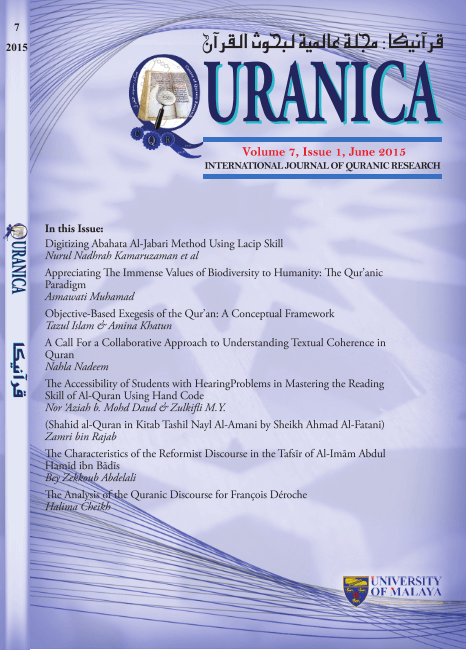A Call for a Collaborative Approach to Understanding Textual Coherence in Quran
Main Article Content
Abstract
Over the years, there has been a considerable debate over textual coherence in Quran and whether or not verses and sections of Quran thematically cohere to make one unified whole as a text. This issue has been thoroughly investigated by early exegetes as well as modern scholars to show how the unique texture of Quran as a genre has contributed to this perceived incoherence. Thus, the paper aims to investigate the reasons behind this perceived incoherence and an explanation of how its unique genre characteristics demand a collaborative approach to finding textual relations among the different sections within and across the Holy text. Drawing on linguistic theories of textual coherence and schemata theory, the researcher developed a collaborative approach to coherence (CAC) upon which she designed an analytical model of investigating textual coherence in Quran. The model comprises two processes: an interpretation process and a reflection process- which cover the different cognitive processes a “critical†reader would go through in order to fully interpret the Quranic text. Through applying the CAC model to Surat AnNaba? (30: 78), the paper investigates both aspects of collaborative coherence: interpretation and reflection as necessary ingredients to perceiving textual relations in Quran. The (CAC) model thus, contributes to the theory of coherence by providing a broader model for the analysis of coherence relations. It also emphasizes the major role played by collaboration and intertextuality in providing textual evidence of the inherent functional links among the different verses and sections so that all parts of Quran are seen to contribute to its overall coherence.
Downloads
Article Details
Disclaimer
QURANICA makes every effort to ensure the accuracy of all its contents. However, opinions, discussions, views and recommendations are expressed in this journal do not necessarily reflect the official policy of QURANICA or views of its editors or publishers. Therefore, QURANICA and its publishers will not be liable for any controversy may be arisen. The journal reserves the right, at its sole discretion, to change its terms and conditions of publications.
Copyright
It is a condition of publication that manuscript submitted to the journal have not been published, accepted for publication, nor simultaneously submitted for publication elsewhere. By submitting a manuscript, the author(s) agrees that copyright for the article is transferred to the publisher, if and when the manuscript is accepted for publication.
